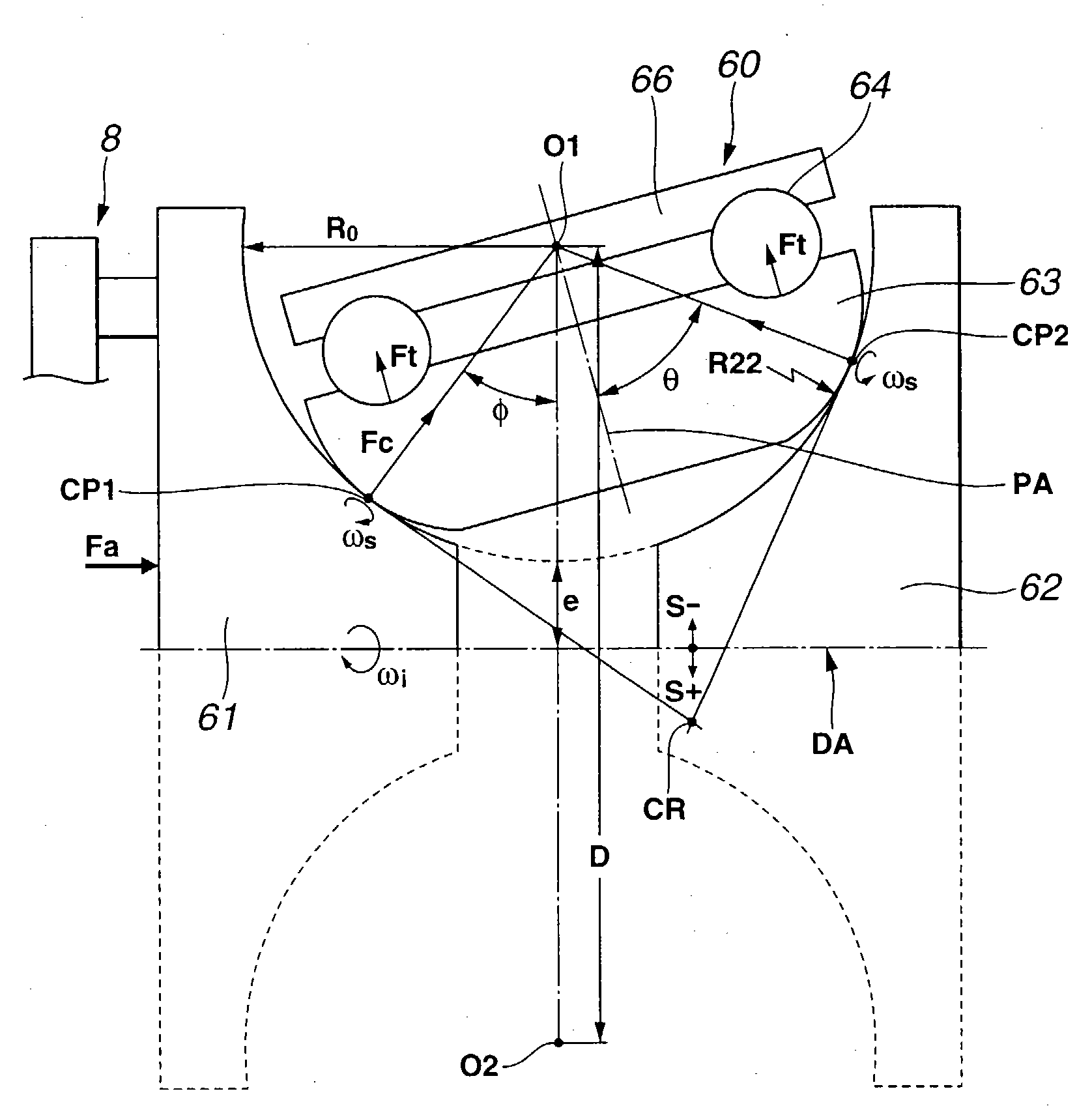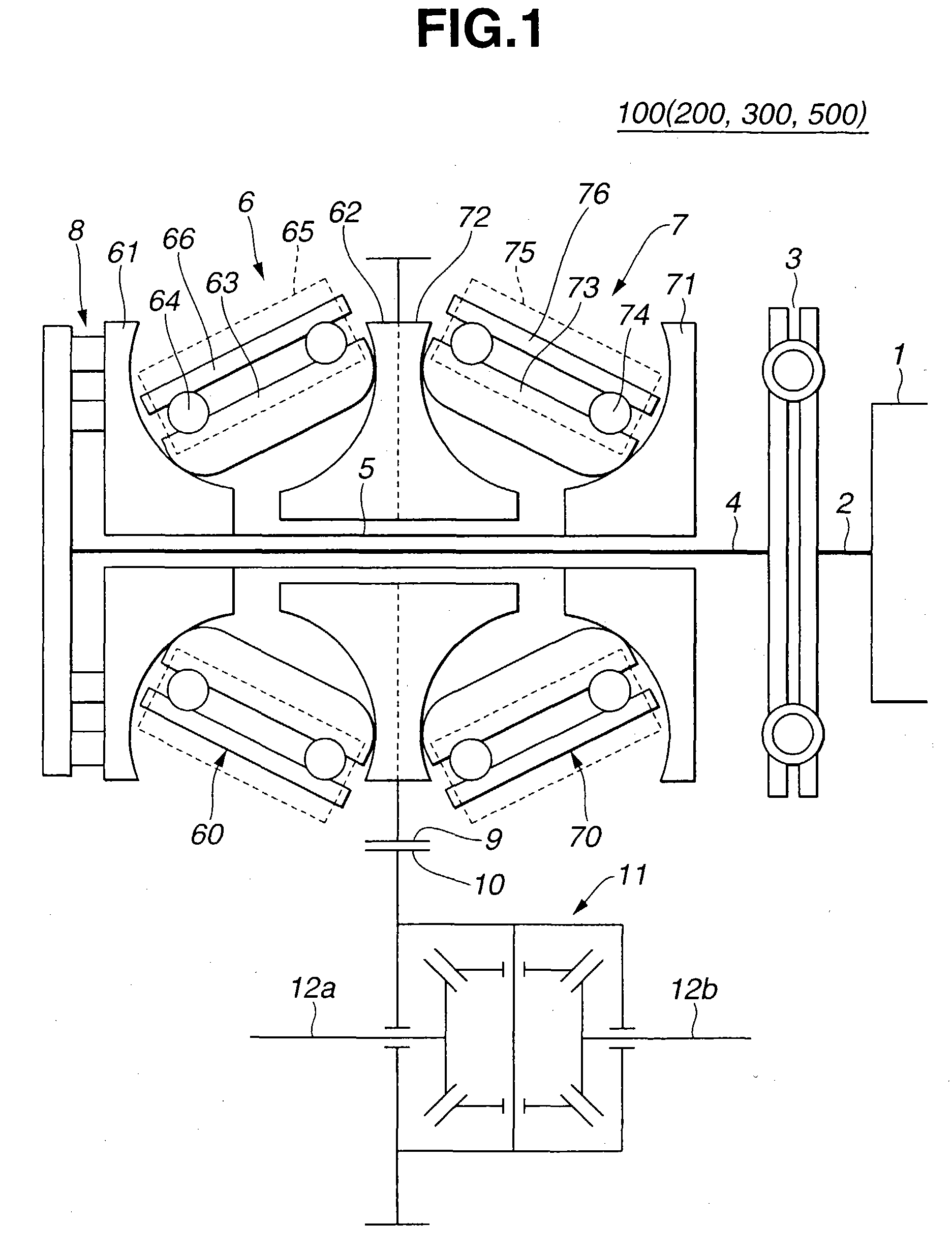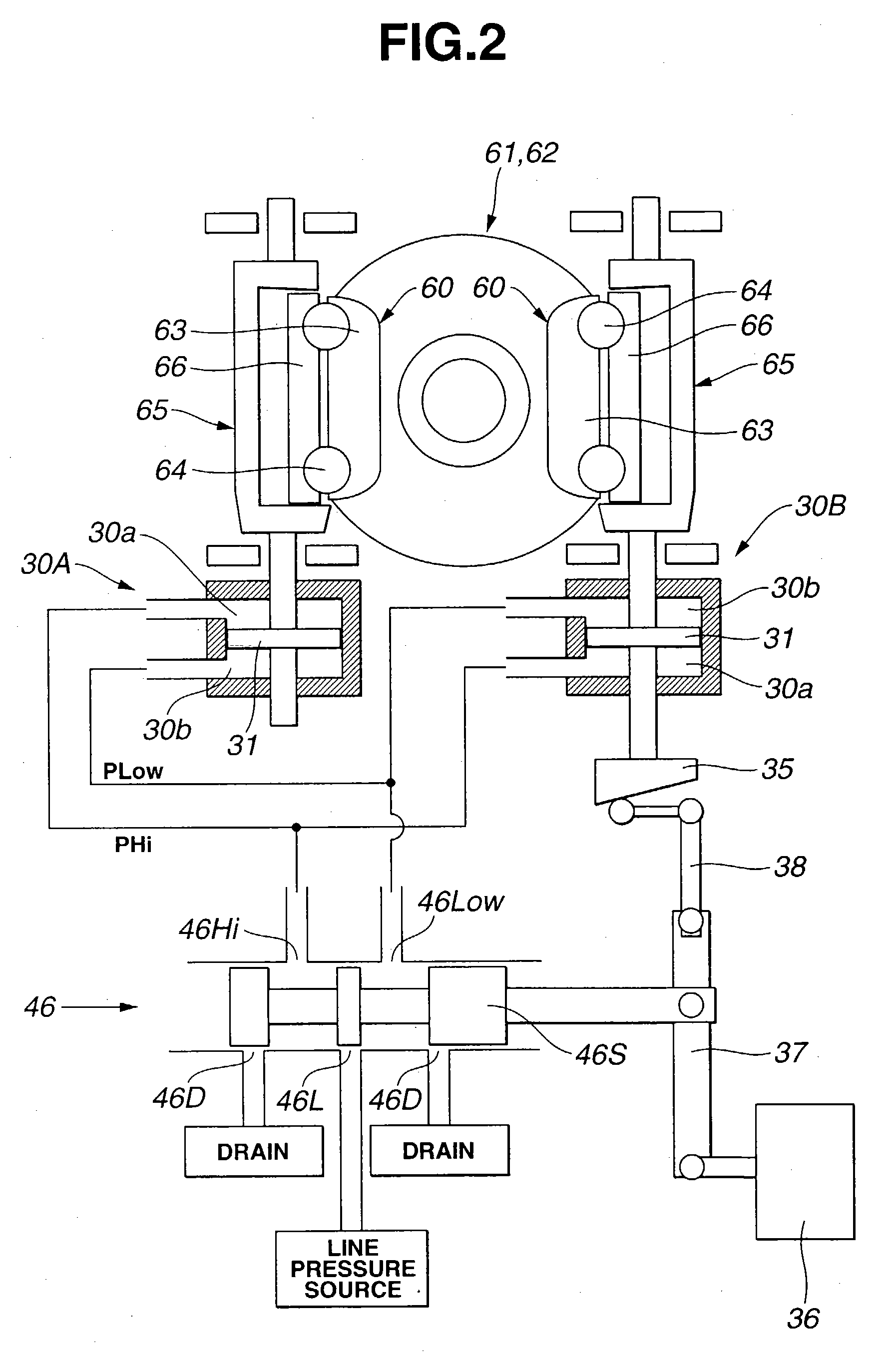Toroidal type continuously variable transmission
- Summary
- Abstract
- Description
- Claims
- Application Information
AI Technical Summary
Problems solved by technology
Method used
Image
Examples
first embodiment 100
[0023] Referring to FIGS. 1 to 4, particularly FIG. 1, there is schematically shown a toroidal type continuously variable transmission 100 which is a first embodiment of the present invention.
[0024] As shown in FIG. 1, the transmission 100 is of a half toroidal type having dual cavities, which comprises an input shaft 4 that is connected through a torsion damper 3 to an output shaft 2 of an engine 1, and a hollow shaft 5 that is rotatably disposed about input shaft 4.
[0025] Around a common axis of the two shafts 4 and 5, there are disposed first and second toroidal power transmission units 6 and 7. First power transmission unit 6 is positioned away from torsion damper 3 with respect to second power transmission unit 7. The two units 6 and7 have respective input discs 61 and 71, and have output discs 62 and 72 which are united. Input disc 61 of first power transmission unit 6 is positioned away from torsion damper 3 with respect to input disc 71 of second power transmission unit 7, a...
second embodiment 200
[0065] A toroidal type continuously variable transmission 200 of a second embodiment of the present invention is substantially the same as that of the above-mentioned first embodiment 100 except the range the curvature ratio (viz., Ro / (2.times.R22)).
[0066] That is, in the second embodiment 200, the following inequality is established:
0.53.ltoreq.Ro / (2.times.R22).ltoreq.0.63 (3)
[0067] That is, in the second embodiment 200, the curvature ratio is not smaller than 0.53 (or 53%) and not larger than 0.63 (or 63%).
[0068] As is seen from the graph of FIG. 5, the power transmission efficiency increases with increase of the curvature ratio (Ro / (2.times.R22)). This is because the contact surface between power roller 60 and each of input and output discs 61 and 62 is reduced with increase of the curvature ratio (Ro / (2.times.R22)). However, as is seen from the graph, when the curvature ratio (Ro / (2.times.R22)) becomes smaller than 0.53 (viz., 53%), the power transmission efficiency suddenly low...
third embodiment 300
[0073] In this third embodiment 300, in addition to establishment of one of the above-mentioned inequalities (1) and (3), the following inequality is established for a bearing stress "BS":
BS.ltoreq.4.2 Gpa (4)
[0074] As is mentioned hereinabove, the bearing stress "BS" is a stress applied to the contact surface between power roller 60 and each of input and output discs 61 and 62.
[0075] As is known in the field of roller bearings, a plastic deformation tends to occur in the contact surface when the bearing stress exceeds 4.2 Gpa, which may cause a vibration and noise of the roller bearing. Accordingly, in the field of roller bearings, it is recommended to use the roller bearing by keeping the bearing stress at a value lower than 4.2 Gpa. In view of this fact, the parameter of the bearing stress is employed in the third embodiment 300. Strictly speaking, the value of the bearing stress should be considered with respect to a material of power roller 60 and input and output discs 61 and ...
PUM
 Login to View More
Login to View More Abstract
Description
Claims
Application Information
 Login to View More
Login to View More - R&D
- Intellectual Property
- Life Sciences
- Materials
- Tech Scout
- Unparalleled Data Quality
- Higher Quality Content
- 60% Fewer Hallucinations
Browse by: Latest US Patents, China's latest patents, Technical Efficacy Thesaurus, Application Domain, Technology Topic, Popular Technical Reports.
© 2025 PatSnap. All rights reserved.Legal|Privacy policy|Modern Slavery Act Transparency Statement|Sitemap|About US| Contact US: help@patsnap.com



